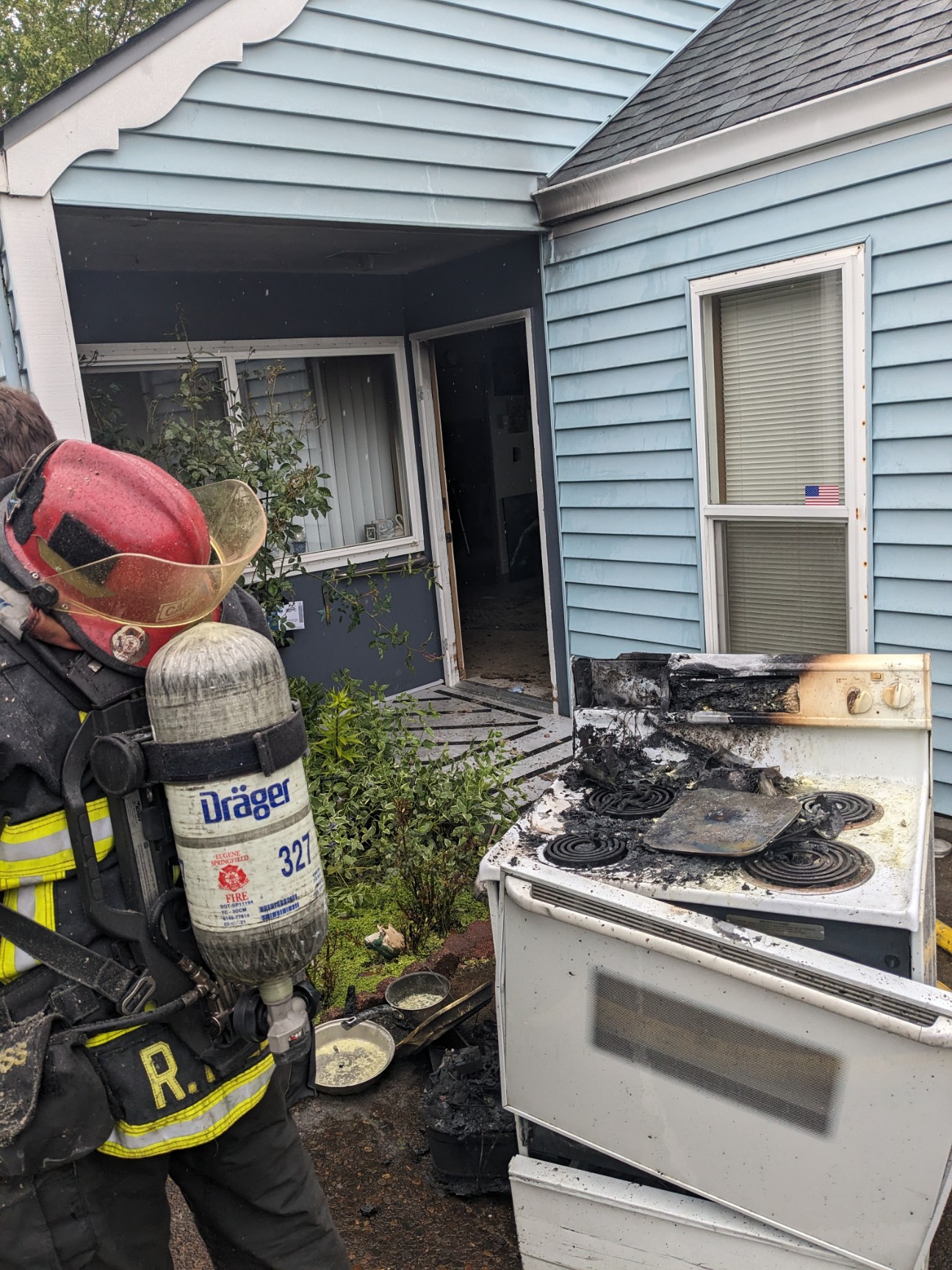The latest news stories and stories of interest in the Willamette Valley from the digital home of Southern Oregon, from Wynne Broadcasting’s WillametteValleyMagazine.com
Monday, May 6, 2024
Willamette Valley Weather



Negotiations Continue Between UO and Student Protest Encampment
It was a quiet weekend at the UO pro-Palestine encampment as the group of nearly 150 tents prepared to enter its second week on the Memorial Quad. Media liaisons in the encampment largely avoided talking to outside media for the day after doing so for six consecutive days.

In an email statement, a UO spokesperson confirmed that negotiations “continue” between the university and student negotiators and are expected to resume on Monday. The statement also indicates that the university is “actively working to prevent unnecessary escalation” in regards to police presence at the encampment.
At least 28 additional UO staff and faculty signed a letter to university administrators in support of the encampment since last night, bringing the total to at least 74 as of this writing.
Students at the encampment announced they had received all necessary supplies to deal with inclement weather, instead requesting that further donations go to their relief fund for Palestine. (SOURCE)
Police Respond Twice to Bomb Threats Called in to West Eugene Walmart and Target
According to the Eugene Police Department, police officers responded twice this week to reported bomb threats that were called into two west Eugene businesses that evacuated their premises as a precautionary measure.
EPD officials said the first threats were reported to the west Eugene Wal-Mart and Target locations on April 29. Both stores evacuated their buildings at about 6:45 p.m. and an investigation by police determined that the threats were unfounded, authorities said.
Eugene police said they responded to another pair of bomb threats called in to 911 dispatchers on May 2 with a threat called in to the Target store at about 8:45 p.m. The Target store was evacuated and searched by officers who found nothing suspicious and employees were then allowed to return to the store, authorities said. Police said that an officer responded to the Wal-Mart store at 9:52 p.m., which self-evacuated after an unknown person called and reported that there was a bomb inside the store. An investigation determined the threat was unfounded, police said.
Firefighters Tackle West Eugene Apartment Fire

Eugene, OR. Eugene Springfield Fire (ESF) responded to a reported apartment fire Saturday morning. At approximately 11:30 am, ESF responded to the Sorgenfri apartments on Hawthorne Ave in West Eugene.
The occupant reported that an air fryer was being cleaned and caught fire. The occupant was able to evacuate safely. ESF Engine 8 was first on scene with a quick response time, encountering smoke and fire from the apartment. Initial units rapidly deployed a hoseline to extinguish the fire and search for occupants.
The fire was placed under control and all occupants were accounted for. There were no injuries reported, and the ESF Fire Marshal’s Office is on the scene investigating. Thanks to a quick response from the closest fire crew, the incident was contained to one unit.
Albany man in Marion County custody after stabbing incident

Around 1 AM Saturday morning deputies responded to the report of a stabbing that occurred in the area of Phipps Ln NE/Beverly Ave NE in Salem. Deputies quickly provided medical aid to the victim who was transported to a nearby hospital. The victim is in stable condition and sustained non-life threatening injuries.
Deputies and Salem Police Officers were able to contain the suspect inside a nearby residence. The Marion County SWAT team was activated and responded to the scene. Negotiators worked to establish communication with the suspect and residents inside the home for about four hours.
Just before 5 AM the suspect surrendered peacefully and was taken into custody for the following charges: Assault II and Unlawful Use of a Weapon. He has been identified as Diego Guajardo 21 of Albany.
Thank you to the Salem Police Department and Marion County UAS team for your assistance during this incident.
2024 Primary Election Ballots in the Mail for Lane County Voters
The Lane County Elections office has placed ballots in the USPS mail stream for the 2024 Primary Election.

Lane County’s 21 ballot drop boxes will remain open until 8:00 pm on Election Day, May 21, 2024. Drop boxes are open 24/7. A list of drop box locations is included with every ballot.
“Most voters will receive their ballot within the next couple of days. Lane County Elections is committed to assisting voters so their voices can be heard and they can play a role in shaping their community,” said Lane County Clerk Dena Dawson.
Voters can track the status of their mail ballot by visiting www.oregonvotes.gov/MyVote.
Voters may return their voted ballots in one of the following ways:
- Regular mail. Ballots must be postmarked no later than May 21, 2024 and received no later than May 28, 2024 to be counted.
- A 24/7 ballot drop box.
- Lane County Elections. Ballots can be turned in by May 21, 2024 directly to the Lane County Elections Office during business hours (open until 8:00 p.m. on Election Day).
Ballot drop box locations can be found online at www.LaneCountyOR.gov/elections.
As a reminder, Oregon is a closed primary state. All voters will have an opportunity to vote on issues and nonpartisan positions. Only voters who are registered members of political parties may vote for their respective party’s candidates in a primary election.
Voters with questions can email elections@lanecountyor.gov or call 541-682-4234.
About the Lane County Elections Office: The Elections Office, located at 275 W. 10th Avenue in Eugene, is responsible for conducting elections in Lane County. The elections office manages voter registration, the processing of mail ballots, recruitment and training of election workers, and certification of elections.
Lane County Sheriff’s Marine Patrol Offers Free Boat Inspections During May
The Lane County Sheriff’s Office is partnering with Bi-Mart to again offer free boat inspections to help you get on the water safely!
Bring your boat to a listed Bi-Mart on the scheduled date and time and a Lane County Sheriff’s Marine Patrol Deputy will inspect your boat for free and help make sure you have everything you need.
And for those non-motorized boats (including paddle boards, kayaks, etc.), be sure to always carry a life jacket, whistle/horn and a waterway access permit.

Saturday 5/04/24 -10am-1pm
Junction City Bi-Mart
110 E 6th Avenue
Sunday 5/05/24 – 10am-1pm
Florence Bi-Mart
4310 Highway 101
Saturday 5/11/24 – 10am-1pm
River Road Bi-Mart
2030 River Road
Sunday 5/12/24 – 10am-1pm
Cottage Grove Bi-Mart
100 Gateway Boulevard
Saturday 5/25/24 – 10am-1pm
Springfield Bi-Mart
1521 Mohawk Boulevard
Sunday 5/26/24 – 10am-1pm
Veneta Bi-Mart
25126 Jeans Road
Amtrak Experiencing Record Ridership From Eugene To Portland

The Amtrak Cascades saw 14,263 riders in March on the section of the route that runs between Eugene and Portland. That’s a 57% increase over the same month last year. It’s also the best month the route has had in its 30-year history.
Shelley Snow with the Oregon Department of Transportation said Spring Break contributed to their record month. But there are other reasons for the boost, including high gas prices and a recent schedule change.
“We have improved the service on the train going northbound out of Eugene,” she said. “The train used to leave at 5:30 a.m. Now it leaves at 7:45 a.m. and we are absolutely seeing more riders on that 7:45 a.m. northbound.”
Snow acknowledged the train is not always on time. She said it’s usually a better bet to take the train if you don’t have time constraints.
Shelley said in 2023, they saw seven months in a row of more than 10,000 riders per month.
“So, we’re back,” she said. “Passenger rail service is back in Oregon and we’re psyched about that. We hope that people who’ve never taken the Amtrak Cascades train will give it a try.”
Amtrak Cascades is operated as a partnership between ODOT, the Washington Department of Transportation and Amtrak. Its trains run daily between Eugene and Vancouver, B.C. https://www.facebook.com/AmtrakCascades

https://epd.mypdconnect.com/
CSOs, our trained, unarmed, civilian officers, handle non-emergency calls, assisting patrol and focusing on property crimes and traffic incidents. My PD Connect is a game-changer in community safety!
CAHOOTS and HOOTS Workers Rally for Wage Increase and Other Contract Issues
It has been more than a year since White Bird Clinic and its unionized crisis workers began negotiations and they still haven’t reached an agreement on a new contract.

CAHOOTS and HOOTS workers held a rally in downtown Eugene Frida calling for better pay and a speedy resolution at the bargaining table. They said their programs are losing staff and having trouble replacing them.
“Our wages are no longer competitive. They are no longer in line with industry standards,” said crisis worker Ashley Cakebread. “As a result, we are struggling to provide the high quality services that we want to offer to the community.”
The starting rate for CAHOOTS and HOOTS is $18 per hour, according to the workers. They say this has been stagnant since 2018, even as inflation has pushed up the cost of living in Eugene.
Crisis worker Berkley Carnine said some staff members have been forced to leave for better paying jobs, despite going through hundreds of hours of training with CAHOOTS.
“It’s incredible the amount of energy we put in, and skills that people develop,” said Carnine, “and then they can’t stay because they can’t afford to live in this town, pay all their bills, and work this job.”
With the resulting staffing shortages, crisis worker Chelsea Swift said it’s often impossible for remaining workers to take time off, even directly after they’ve experienced a traumatic event on the job.
The programs’ workers voted to join the Teamsters Local 206 in 2022. Collective bargaining on this contract began over 13 months ago.
“[The process] being so slow and drawn out has been demoralizing, and it feels we’re supposed to give up on some things that just get across the finish line,” Carnine told KLCC at Friday’s rally. “We’re here to say, no, we’re holding true to what we know we need.”
The workers’ bargaining unit is seeking a starting wage of $25 per hour. Swift said this would reflect the pay of Community Resource Officers, who have similar duties.
Right now, Cakebread said she’s making $19.31 per hour, despite working at White Bird for nearly ten years and helping to found the HOOTS program.
“I have been waiting for a wage increase for six years,” said Cakebread. “I would really like to know that my work is valued, that my experience is valued, that the 60 to 80 hour weeks that I have put into White Bird matter.”
Additionally, the workers are asking for assurance that CAHOOTS vans will be adequately staffed in the future, and are also seeking more worker benefits.
“We want to provide high quality, consistent services. We want to be there when you call, and we want to be there quickly,” said Cakebread. “And in order to do that, we need to be supported by our leadership.”
White Bird Clinic responded to KLCC with an emailed statement attributed to Executive Director Jeremy Gates. In it, Gates said leadership will continue to negotiate in good faith, and is confident about reaching a deal.
“The bargaining process requires us to keep much of the details at the table rather than in the public, but it’s important to note that we fully support our employees’ right to organize and negotiate,” wrote Gates. “Union organizing can be a catalyst for positive change.” (SOURCE)
Support CAHOOTS and HOOTS Workers Win a Fair First Contract NOW — PETITION
Did you know the $18/hr starting wage for CAHOOTS and HOOTS workers hasn’t changed since 2018? Sign this letter of support to help CAHOOTS (Crisis Assistance Helping Out On the Streets) and HOOTS (Helping Out Our Teens in Schools) unionized workers win their first fair union contract with White Bird Clinic.
CAHOOTS medics and crisis workers have been proudly supporting their fellow community members on the streets and in the houses, schools, businesses, shelters, hospitals and healthcare offices of every neighborhood in Eugene since 1989. CAHOOTS later expanded service into Springfield in 2015 and soon founded its sister program HOOTS in 2017. These programs provide free crisis intervention, mental health and medical aid to whoever is in need (for CAHOOTS that’s an average of 20,000+ calls a year; HOOTS provides 28 clinics in 12 high schools).
Today, their workers need your support. Show your commitment to sustaining workers and protecting the integrity of the CAHOOTS model that has been called “the gold standard”* for alternative response models nationally. Sign here to ensure crisis workers and medics who are dedicating their lives towards helping others win a living wage. Learn more about our campaign
https://www.change.org/p/support-cahoots-and-hoots-workers-win-a-fair-first-contract-now

Oregon to Honor Fallen Law Enforcement Officers May 7th, 2024

Every year, the Oregon Law Enforcement Memorial Ceremony honors the state’s law enforcement officers who have died in the line of duty. This year’s ceremony will be held Tuesday, May 7 at 1 p.m. at the Oregon Public Safety Academy in Salem.
The annual event commemorates the more than 190 fallen officers who have made the ultimate sacrifice in service to the state of Oregon since the 1860s. This includes law enforcement, corrections, and parole and probation officers from city, county, state, tribal and federal law enforcement agencies.
The Department of Public Safety Standards and Training is proud to host the ceremony in partnership with the Oregon Law Enforcement Memorial Fund, Oregon Concerns of Police Survivors (C.O.P.S.), Oregon Fallen Badge Foundation, and various statewide law enforcement associations.
Oregon Health Authority · COVID-19 Update

New data released this week show the number of adults hospitalized with COVID-19 in Oregon at its lowest point since June 2020, dropping about 34% during April. COVID-19 is still out there, and we expect case numbers to rise again, likely this fall/winter. Overall, however, community transmission is currently low.
For more information, visit: https://ow.ly/GZ9m50RwkyK
Tuition to rise again at Oregon’s seven public universities
Oregon’s public four-years already charge some of the highest tuition and fee rates among public universities in the West
Incoming freshmen at Oregon’s public universities will pay record tuition for the upcoming school year, with all seven of the state’s public universities hiking the cost again.
Nearly every one of the schools has increased tuition every year for the past 10 years, making average tuition at Oregon’s public universities today about 26% higher than it was a decade ago, according to the state’s Higher Education Coordinating Commission.
The hikes have drawn the ire of students and the commission leaders, who point to the lack of state funding for higher education as a key reason tuition continues to rise. Oregon ranks 32nd among states for public investment in higher education, according to the Colorado-based policy group State Higher Education Executive Officers Association.
Nearly every public university in the state has approved tuition increases of 3% to 5% for the 2024-25 school year, while the board of Eastern Oregon University in La Grande is preparing to vote on a tuition increase within that range by May 15. Any tuition increases above 5% require that the universities’ boards get approval from the Higher Education Coordinating Commission.
“Oregon public universities have some of the highest tuition and fee rates among Western states,” said Ben Cannon, executive director of the commission, in an email. “We are very concerned about increased tuition and rising college costs as a whole (including tuition, housing, books, etc.), particularly as they affect low-income populations who are struggling most.”
The tuition hikes means that in-state freshmen at the University of Oregon will pay more than $16,100 a year, while in-state full-time students at Portland State University will pay about $11,800 compared with $14,400 for Oregon State University. The three universities have the highest enrollment in the state, and the University of Oregon and Oregon State are the most expensive public universities in the state.
The schools say rising inflation and higher staff costs, including contributions to the state’s Public Employees Retirement System, or PERS, along with the cost of materials and capital investment are also behind the tuition hikes. Despite dramatic rises in tuition during the last decade, full-time enrollment in Oregon’s four-year universities has declined by about 3,000 students since 2014, and the number of students enrolled in classes has fallen by about 4,000 over that time period. Last fall, nearly 80,000 students were enrolled at Oregon’s public universities, and more than 98,000 were taking classes.
At every university, student tuition and fees make up more than half of revenue, one of the highest proportions in the nation, according to a recent report commissioned by lawmakers from the National Center for Higher Education Management Systems, a nonprofit think tank in Colorado. About 25 years ago, public funding accounted for up to 75% of the cost of each full-time employee at an Oregon university. Now, it pays for about 50% or less, researchers found. Oregon’s per-pupil funding for full-time college students is about $5,600 annually, around $3,000 less than what California and Washington provide.
“When the Oregon state Legislature and our governor fail to prioritize meaningful state investment in our college and universities, Oregon’s students’ foot the bill via yearly tuition increases,” Nick Keough, legislative director for the nonprofit student advocacy group Oregon Student Association, said in an email. “Continual tuition increases are undoubtedly pricing Oregonians and students out of higher education every day, while contributing to the exasperation of the student debt crisis here in Oregon.” READ MORE: https://oregoncapitalchronicle.com/2024/05/01/tuition-to-rise-again-at-oregons-seven-public-universities/
AC, power banks, mini fridges: Oregon equips Medicaid patients for climate change
Oregon is shipping air conditioners, air purifiers, and power banks to some of its most vulnerable residents, a first-in-the-nation experiment to use Medicaid money to prevent the potentially deadly health effects of extreme heat, wildfire smoke, and other climate-related disasters.
The equipment, which started going out in March, expands a Biden administration strategy to move Medicaid beyond traditional medical care and into the realm of social services.
At least 20 states, including California, Massachusetts, and Washington, already direct billions of Medicaid dollars into programs such as helping homeless people get housing and preparing healthy meals for people with diabetes, according to KFF. Oregon is the first to use Medicaid money explicitly for climate-related costs, part of its five-year, $1.1 billion effort to address social needs, which also includes housing and nutrition benefits.
State and federal health officials hope to show that taxpayer money and lives can be saved when investments are made before disaster strikes.
“Climate change is a health care issue,” so helping Oregon’s poorest and sickest residents prepare for potentially dangerous heat, drought, and other extreme weather makes sense, said Health and Human Services Secretary Xavier Becerra on a visit to Sacramento in early April.
Becerra said the Biden administration wants states to experiment with how best to improve patient health, whether by keeping someone housed instead of homeless, or reducing their exposure to heat with an air conditioner.
But Medicaid’s expansion into social services may duplicate existing housing and nutrition programs offered by other federal agencies, while some needy Americans can’t get essential medical care, said Gary Alexander, director of the Medicaid and Health Safety Net Reform Initiative at the Paragon Health Institute.
“There are 600,000 or 700,000 intellectually disabled people in the United States waiting for Medicaid services. They’re on a waitlist,” said Alexander, who oversaw state health agencies in Pennsylvania and Rhode Island. “Meanwhile Medicaid has money for housing and food and air conditioners for recipients. Seems to me that we should serve the intellectually disabled first before we get into all of these new areas.”
Scientists and public health officials say climate change poses a growing health risk. More frequent and intense floods, droughts, wildfires, extreme temperatures, and storms cause more deaths, cardiovascular disease from poor air quality, and other problems, according to the federal government’s Fifth National Climate Assessment.
The mounting health effects disproportionately hit low-income Americans and people of color, who are often covered by Medicaid, the state-federal health insurance program for low-income people.
Most of the 102 Oregonians who died during the deadly heat dome that settled over the Northwest in 2021 “were elderly, isolated and living with low incomes,” according to a report by the Oregon Health Authority, which administers the state’s Medicaid program, with about 1.4 million enrollees. The OHA’s analysis of urgent care and emergency room use from May through September of 2021 and 2022 found that 60% of heat-related illness visits were from residents of areas with a median household income below $50,000.
“In the last 10-plus years, the amount of fires and smoke events and excessive heat events that we’ve had has shown the disproportionate impact of those events on those with lower incomes,” said Dave Baden, the OHA’s deputy director for programs and policy.
And, because dangerously high temperatures aren’t common in Oregon, many residents don’t have air conditioning in their homes.
Traditionally, states hit by natural disasters and public health emergencies have asked the federal government for permission to spend Medicaid dollars on back-up power, air filters, and other equipment to help victims recover. But those requests came after the fact, following federal emergency declarations.
Oregon wants to be proactive and pay for equipment that will help an estimated 200,000 residents manage their health at home before extreme weather or climate-related disaster hits, Baden said. In addition to air conditioning units, the program will pay for mini fridges to keep medications cold, portable power supplies to run ventilators and other medical devices during outages, space heaters for winter, and air filters to improve air quality during wildfire season.
In March, the Oregon Health Plan, the state’s Medicaid program, began asking health insurers to find patients who might need help coping with extreme weather. Recipients must meet federal guidelines that categorize them as “facing certain life transitions,” a stringent set of requirements that disqualify most enrollees. For example, a person with an underlying medical condition that could worsen during a heat wave, and who is also at risk for homelessness or has been released from prison in the past year, could receive an air conditioner. But someone with stable housing might not qualify.
“You could be in a housing complex, and your neighbor qualified for an air conditioner and you didn’t,” Baden said.
At the offices of insurer AllCare Health in Grants Pass, Oregon, air conditioners, air filters, and mini fridges were piled in three rooms in mid-April, ready to be handed over to Medicaid patients. The health plan provided equipment to 19 households in March. The idea is to get the supplies into people’s homes before the summer fire season engulfs the valley in smoke.
Health plans don’t want to find themselves “fighting the masses” at Home Depot when the skies are already smoky or the heat is unbearable, said Josh Balloch, AllCare’s vice president of health policy.
“We’re competing against everybody else, and you can’t find a fan on a hot day,” he said.
Oregon and some other states have already used Medicaid money to buy air conditioners, air purifiers, and other goods for enrollees, but not under the category of climate change. For example, California offers air purifiers to help asthma patients and New York just won federal approval to provide air conditioners to asthma patients.
Baden said Oregon health officials will evaluate whether sending air conditioners and other equipment to patients saves money by looking at their claim records in the coming years.
If Oregon can help enrollees avoid a costly trip to the doctor or the ER after extreme weather, other state Medicaid programs may ask the federal government if they can adopt the benefit. Many states haven’t yet used Medicaid money for climate change because it affects people and regions differently, said Paul Shattuck, a senior fellow at Mathematica, a research organization that has surveyed state Medicaid directors on the issue.
“The health risks of climate change are everywhere, but the nature of risk exposure is completely different in every state,” Shattuck said. “It’s been challenging for Medicaid to get momentum because each state is left to their own devices to figure out what to do.”
A California state lawmaker last year introduced legislation that would have required Medi-Cal, the state’s Medicaid program, to add a climate benefit under its existing social services expansion. The program would have been similar to Oregon’s, but AB 586, by Assembly member Lisa Calderon, died in the Assembly Appropriations Committee, which questioned in a staff analysis whether “climate change remediation supports can be defined as cost-effective.”
The cost savings are clear to Kaiser Permanente. After the 2021 heat wave, it sent air conditioners to 81 patients in Oregon and southwest Washington whose health conditions might get worse in extreme heat, said Catherine Potter, community health consultant at the health system. The following year, Kaiser Permanente estimated it had prevented $42,000 in heat-related ER visits and $400,000 in hospital admissions, she said.
“We didn’t used to have extreme heat like this, and we do now,” said Potter, who has lived in the temperate Portland area for 30 years. “If we can prevent these adverse impacts, we should be preventing them especially for people that are going to be most affected.” (SOURCE)
NOAA researchers announce 33% increase in gray whale numbers, end investigation into die-off

There’s good news for whale lovers on the Oregon coast.
The number of gray whales that migrated south along the Pacific Coast this winter have rebounded sharply to numbers not seen in four years, according to the fisheries unit of the National Oceanic and Atmospheric Administration or NOAA.
The increase is large enough and signs of healthy North Pacific gray whales are visible enough that NOAA also announced it had ended its five-year “unusual mortality event” investigation into what may have led to their decline from 2018 through 2023.
The latest counts were conducted between late December and mid-February.
Researchers estimate there are 19,260 gray whales along the West Coast — a surprising 33% increase from the 14,530 whales counted during the same period of 2022-23. Last season’s count was the lowest since 1971-72.
Researchers have been counting whales during their southward migration since 1967 and use three months of visual surveys along the central California coast that are plugged into a formula used and refined for decades.
But a spokesman for NOAA Fisheries cautioned against reading too much into one year’s dramatic increase.
“People shouldn’t get too hung up on the 33% specifically but more importantly see that the numbers are increasing,” said NOAA spokesman Michael Milstein. “The numbers are trending up. The indications are consistent that the whales have gone from a decline to a recovery.”
That’s good news for scientists and whale enthusiast along the Oregon, Washington and California coasts.
The recovery is evident enough that NOAA officially declared an end to its five-year investigation into why many north Pacific gray whales appeared undernourished and why strandings increased starting in 2018.
NOAA’s investigation began in 2019 after hundreds of gray whales stranded along the Pacific coast from Mexico to Alaska, including in whales in their wintering, migratory, and feeding areas.
There was a roughly 40% decline in the gray whale population, leading to the official designation of an “unusual mortality event” which then triggered a required effort to understand why it was happening.
The mortality event occurred between December 2018 through last November, with peak strandings occurring during a two-year period ending in December 2020. There were 690 gray whale strandings, including 347 in the United States, 316 in Mexico, and 27 in Canada.
“While the number of strandings spiked at the start of the unusual mortality event, they have since declined to annual numbers similar to those recorded before the event began,” NOAA Fisheries said in a statement. “The number of calves born to the population also appears to be improving, with other signs that the population may have begun to recover.”
The number of calves born in 2022 was estimated at 217, down from about 950 in 2018. NOAA researchers estimate that 412 female gray whales swam north last year — nearly twice the 2022 count. Still, that number was far below the estimate of roughly 1,500 gray whale calves in 2016.
NOAA said the decline in gray whale numbers during from 2018 to 2023 resembled a similar but shorter decline between 1999 and 2000. The population rebounded in the following years eventually reaching a recent height of 27,500 whales in 2015-16 before declining again in 2019-20.
“We know the population has demonstrated strong resilience in the past, and we will be watching to ensure we know how the whales recover from this unusual mortality event,” said Deborah Fauquier, NOAA’s coordinator of the investigation.
Studies of dead whales supported malnutrition as a common cause of death and did not identify other causes or infections. NOAA investigators concluded that localized ecosystem changes, including both access to and the quality of prey, in the northern Bering and Chukchi seas contributed to the poor nutritional condition observed in live and stranded gray whales.
Killer whale predation, entanglement in fishing nets, biotoxins and collisions with vessels also contributed to gray whale deaths. But these factors were not as significant as malnutrition, researchers said.
NOAA said marine mammal stranding networks in the United States, Canada, and Mexico will continue to respond to whale stranding reports this year and collect samples when feasible. NOAA Fisheries will also conduct a survey this spring and summer to evaluate whale calf production. READ MORE: https://oregoncapitalchronicle.com/2024/05/06/noaa-researchers-announce-33-increase-in-gray-whale-numbers-end-investigation-into-die-off/
Report Shows More Oregonians Are Living Alone
Nearly a third of Oregon households consist of someone living alone. That’s more than a half-million people with no one else in their household. It is a record high, according to the most recent data from the U.S. Census Bureau and the Oregon Office of Economic Analysis.
And the share of Oregon residents who live alone is up by about 50% this century.
Oregon’s shift mirrors national trends, according to Josh Lehner, a state economist who wrote an analysis of the state’s single-person households earlier this year.
Relatively few adults live alone in their 20s and 30s, Lehner noted. People often have roommates to help cover their housing costs, then form couples as they age. Many start families.
The number of people living alone is much higher among seniors. That’s partly because some have divorced, Lehner wrote, and partly because some of their spouses have died. The rate of Oregonians living alone rises sharply after age 75, and nearly all that increase is among women, who tend to live longer.
The number of Americans living alone has more than doubled since 1960, when just 1 in 8 households consisted of someone living by themselves, according to a federal report last year.
Many live alone by choice and are perfectly happy on their own. But the report by the U.S. Surgeon General found that living alone is one of several risk factors for rising loneliness and social isolation.
The report urges all levels of society to be more proactive in encouraging connections among people to fight feelings of loneliness, and suggests each person should make more of an effort to connect with friends and neighbors. (SOURCE)
During Mental Health Awareness Month, OHA reminds Oregonians of support resources for those in need and their loved ones
PORTLAND, Ore. – Oregon Health Authority is recognizing Mental Health Awareness Month during May by promoting resources that support mental well-being for all Oregonians.
One in five people will experience a mental health condition in a given year, and about half of all Americans will meet the criteria for a diagnosable mental health condition sometime in their lives, according to national statistics.
Nearly everyone faces challenges in life that can affect their mental health and emotional well-being.
“Too many people in our state are facing mental health challenges, and we want everyone to know you do not have to struggle alone,” said OHA Director Sejal Hathi, M.D., MBA.
Dr. Hathi, who has spoken about her mental health journey, added, “In many of our communities, societal or cultural norms discourage people from reaching out, or even admitting that we may need some help. Mental Health Awareness Month is a critical opportunity to highlight that mental health is health.”
Here are a few highlights of resources available for Oregonians:
- OHA provides support for Community Mental Health Programs that provide services related to mental health, substance use, and problem gambling, in counties and communities across Oregon. A directory of these services, listed by county can be found
- In Oregon, the 988 Suicide & Crisis Lifeline is available 24 hours a day, seven days a week. The easy-to-remember 988 number is available for people experiencing any type of mental health challenge, substance use crisis or thoughts of suicide or self-harm. Anyone who needs support can call, text or chat in English and Spanish (interpretation services and American Sign Language are also available) and connect with trained crisis counselors. The 988 Lifeline is also a resource for friends and families concerned about a loved one.
- The Mental Health Toolkit was created through a collaboration between OHA and Oregon Department of Education to help educators increase students’ academic achievement through meeting their mental and behavioral health needs.
- Online resources from Sources on Strength – Sources of Strength has two online resource packets. The first is Resources for Practicing Strength at Home, and the second is a shorter version that also offers a wellness plan. Any resource in these packets can be used in classrooms, staff meetings, in individual or group counseling, or to practice strength wherever you are.
OHA encourages communities, organizations, and individuals to use the month of May to help raise awareness of mental health and well-being.
Asante Rogue Regional Medical Center Is Contacting More Patients and Families About Infections Amidst Criminal Drug Diversion Case
Shlesinger & deVilleneuve, a Medford law firm, states the hospital involved in a criminal drug diversion investigation is notifying more former patients or their families about possible injury or death related to more cases of in-hospital infection.

Medford attorney David deVilleneuve told NewsWatch 12 today his firm, Shlesinger & deVilleneuve, has a possible new civil case client who says Asante Rogue Regional Medical Center (Asante) contacted the client this week to notify that its related patient, who died, could have been infected at Asante.
“I’m interested in whether the hospital staff responded appropriately, not necessarily that the hospital staff was perpetrating a crime or actually stealing fentanyl, though I’m not ruling that out, either,” said deVilleneuve. “I’m investigating whether Asante responded to the increase in infections in a timely manner and in a responsible manner.”
deVilleneuve said today his firm now has 74 prospective client cases related to Asante and possible deadly drug diversion there. He said 15 cases with the strongest evidence could bring his firm’s initial civil case filings in the next 30-60 days.
deVilleneuve said eight of those 15 cases involve deaths of Asante patients, besides the new prospective client contact this week which indicates Asante is notifying more former patients who could have been affected adversely by a bacterial strain while at the hospital. He said the possible new case that surfaced this week involves a patient hospitalized at Asante in 2022.
“I’m concerned that maybe there’s a list or maybe a group of patients on their list that they (Asante) want to notify or they’ve tried to reach out, to some degree tried to reach out, but have never been contacted,” said deVilleneuve. “And maybe they’re in our community, and they don’t know they’re a potential victim because they’ve never been contacted.”
About Asante, deVilleneuve says, “I see no efforts on their part to inform the public about what’s going on. They are making efforts to whom they have articulated as potential victims. I’m concerned that maybe their search criterion isn’t going to pick up some of the potential victims. That’s why people who have not been notified by Asante or Medford Police Department should still call us because most of these people on our list have not been contacted by Medford PD or Asante, and they’ve all suffered from infections. That number (of his firm’s cases) alone doesn’t match up with the CDC numbers (for Asante in-hospital infections), so there’s a much higher rate of infections, I think, than has been reported, and so it begs the question, ‘Are there other people?'”
The Jackson County District Attorney’s Office said last week it had received Medford Police Department’s (MPD) criminal investigation of drug diversion at Asante. MPD said it started that investigation in December when Asante administration alerted police to its concern that hospital staff might have diverted drugs prescribed for patients. MPD said Jan. 3, 2024, “Additionally, there was concern that this behavior resulted in adverse patient care, though the extent of the impact on those patients is yet to be determined. MPD is actively working on investigating these claims.”
One claim became a civil case filed in February by Idiart Law Firm, when it listed Asante and its former nurse Dani Schofield as defendants for a case by the estate of Horace Wilson, who died at Asante Feb. 25, 2022. The case said Schofield charted that she administered fentanyl to Horace Wilson on several dates beginning Jan. 29, 2022, and, “In order to divert the fentanyl, Defendant SCHOFIELD replaced this entire quarter of a liter of ‘missing fluid’ with non-sterile tap water, thus reintroducing new inoculums of the bacterium Staphylococcus epidermidis into Horace Wilson’s bloodstream via his central line each time she administered the solution.”
MPD also said in January this year that the Department, “has received numerous calls from individuals asking if they or a family member have been impacted by the suspected actions of the former Asante employee. Asante has informed MPD that they have identified the involved patients and have notified or are in the process of notifying them or their families.”
deVilleneuve said this week’s Asante call to his prospective client causes him to expect more clients and claims to surface.
He said his firm’s investigation has noted that perhaps 10% of hospital staff are involved in drug diversion, which suggests it could be underway more broadly than the public knows.
deVilleneuve also said his firm’s investigation found some drug diversion involving clear fluid medicine either substituted saline solution as a sterile replacement or substituted nothing, leaving an intended patient in pain, so he’s surprised a medical professional would use tap water to replace an IV drug, knowing the possible illness it could cause. (SOURCE)
May is Wildfire Awareness Month
SALEM, Ore. – May is Wildfire Awareness Month. Oregon experiences its heaviest wildfire activity during the summer months, but fires occur all seasons of the year including spring. Keep Oregon Green, in partnership with federal, state, tribal and local fire agencies, will be spreading the word about the steps we all can take to prevent the start of careless, unwanted wildfires this summer, and encouraging Oregonians to create defensible space around homes and outbuildings.
At stake: lives, property and scenic beauty – Each year, over 70% of Oregon’s wildfires are started by people. Many are a result of escaped debris burn piles or gas-powered equipment and vehicles casting sparks or catching fire.
During the 2023 fire season, the Oregon Department of Forestry reported that people were directly responsible for sparking 823 wildfires that burned 6,197 acres. Any spark can gain traction in dry vegetation, spread quickly and impact lives, personal property, and the many benefits provided by Oregon’s scenic natural areas.
Before heading outdoors this summer, contact the agency or landowner who manages the land at your destination for an update on current fire restrictions or bans. Any visitor to Oregon’s natural areas should be familiar with these restrictions before building campfires or using equipment that could ignite a wildfire.
Put Your Smokey Hat On – Smokey Bear is celebrating his 80th birthday this year. Smokey is a beloved and trusted American icon that has educated the public on preventing human caused wildfires since 1944. His timeless and important message celebrates people who take responsibility and prevent wildfires. Smokey’s hat is the driving force behind Keep Oregon Green’s 2024 summer wildfire prevention campaign. “Put Your Smokey Hat On” is a call to action, encouraging the public to predict the outcome of their actions and do everything they can to prevent wildfire ignitions. Campaign artwork, PSAs, and additional wildfire safety tips can be found at keeporegongreen.org and its various social media platforms.
Coming soon: More Wildfire Awareness Month tips – During May, a new wildfire prevention topic will be shared each week to help homeowners and recreationists learn how to prevent their outdoor activities from sparking the next wildfire. For more information, visit the websites for Keep Oregon Green at www.keeporegongreen.org, the Oregon Department of Forestry at www.oregon.gov/odf, and the Oregon State Fire Marshal at https://www.oregon.gov/osfm/education/pages/prevent-wildfires.aspx
Follow Oregon wildfire news and prevention updates on social media: Twitter @keeporegongreen, @ORDeptForestry and @OSFM
OHCS on track to help hundreds of disaster survivors through the Homeowner Assistance and Reconstruction Program
Program moves into application and review phase — Oregon Housing and Community Services (OHCS) is moving into the application phase of the Homeowner Assistance and Reconstruction Program (HARP) after receiving nearly 800 Eligibility Questionnaires from survivors of the 2020 Labor Day wildfires and straight-line winds. This is an important milestone only made possible because of the partnership of local organizations.
ReOregon, an OHCS program, launched HARP at the end of March to help homeowners with low to moderate incomes who still need assistance to repair, rebuild, or replace their homes in the wake of the disasters.
“The HARP program is now progressing into the application review phase, which brings us closer to getting survivors the resources they need on their path to recovery,” said Ryan Flynn, director of Disaster Recovery and Resilience at OHCS. “We also want to thank all of our outreach and intake partners for their help in reaching and assisting hundreds of survivors. We couldn’t do this without them.”
ReOregon is now working on notifying more than 300 of the 800 people who submitted questionnaires with instructions on how they can apply for HARP. Local culturally specific organizations are helping households that may need additional support navigating the application process. ReOregon estimates there may be more survivors who may be eligible for assistance in later phases of HARP.
Those who are interested can still fill out the Eligibility Questionnaire on the re.oregon.gov website where eligibility requirements are also listed.
For assistance with the process, contact the ReOregon Call Center at 1-877-510-6800 or 541-250-0938 or email t@oregon.org“>housingsupport@oregon.org. Additionally, OHCS has partnered with community-based organizations to provide in-person support. A full list of these partners is on the re.oregon.gov website.
About Oregon Housing and Community Services (OHCS) – OHCS is Oregon’s housing finance agency. The state agency provides financial and program support to create and preserve opportunities for quality, affordable housing for Oregonians of low and moderate income. OHCS administers programs that provide housing stabilization. OHCS delivers these programs primarily through grants, contracts, and loan agreements with local partners and community-based providers. For more information, please visit: oregon.gov/ohcs.
Oregon Offers Electric Car Rebates Again – Apply Now Until June 3rd

Due to high demand and limited funding, OCVRP will be open for a short time in 2024. Vehicles must be purchased or leased between April 3, 2024, to June 3, 2024, to be eligible for a rebate.
Applicants have six months from their date of purchase or lease to apply. Low- and moderate-income households can prequalify for the $5,000 Charge Ahead rebate by completing the application now at https://apps.oregon.gov/DEQ/Voucher/apply.
LCSO Case #24-1671 – Missing Person from west Eugene

The Lane County Sheriff’s Office is looking for 39-year-old Brian John Fierke. He last had contact with his family on March 26th, 2024. Deputies, detectives, and Sheriff’s Search & Rescue have searched extensively for Fierke without success.
Fierke is described as a white male adult, standing approximately 6’4” tall and weighing about 185 pounds. Fierke has brown hair and blue eyes. He may have brown facial hair.
Anyone with information about Fierke’s whereabouts is asked to contact the Lane County Sheriff’s Office at 541-682-4150, option 1, and reference LCSO Case #24-1671.



Missing child alert — Jerrica Landin is still missing and is believed to be in danger

The Oregon Department of Human Services (ODHS), Child Welfare Division, asks the public to help find Jerrica Landin, age 17, a child in foster care who went missing from Portland, Oregon on Aug. 21. She is believed to be in danger.
ODHS asks the public for help in the effort to find Jerrica and to contact 911 or local law enforcement if they believe they see her.
Jerrica may be in Portland or Eugene in Oregon. She may also be in Washington in Vancouver, Seattle or the Tri Cities.
Name: Jerrica Landin
Pronouns: She/her
Date of birth: Oct. 24, 2006
Height: 5-foot-6
Weight: 130 pounds
Hair: Reddish brown
Eye color: Brown
Other identifying information: Jerrica has a tattoo of a heart on her neck below her right ear. She often dyes her hair red, pink and purple.
Portland Police Bureau Case #23-803125
National Center for Missing and Exploited Children #1489518
Sometimes when a child is missing, they may be in significant danger and ODHS may need to locate them to assess and support their safety. As ODHS works to do everything it can to find these missing children and assess their safety, media alerts will be issued in some circumstances when it is determined necessary. Sometimes, in these situations, a child may go missing repeatedly, resulting in more than one media alert for the same child.
Report child abuse to the Oregon Child Abuse Hotline by calling 1-855-503-SAFE (7233). This toll-free number allows you to report abuse of any child or adult to the Oregon Department of Human Services, 24 hours a day, seven days a week and 365 days a year.
PART 2 – Newsweek Podcast Focusing on The Disappearance of Fauna Frey From Lane County

Here One Minute, Gone the Next —-– PART 2 – Josephine County Sheriff Dave Daniel joins investigative journalist Alex Rogue to speak with Here One Minute, Gone the Next about the disappearance of Fauna Frey, the growing friction between citizen investigators and law enforcement, and the lack of resources in missing persons cases. https://podcasts.apple.com/us/podcast/the-disappearance-of-fauna-frey-pt2-feat-sheriff/id1707094441?i=1000630100040
PART 1 – John Frey joins Newsweek to discuss exclusive details about the case of his missing daughter that until now have been unavailable to the general public.
If you have any information on the whereabouts of Fauna Frey, call the anonymous tip line at 541-539-5638 or email FindFaunaFrey@gmail.com. — Help Find Fauna Frey #FindFaunaFrey FACEBOOK GROUP


















